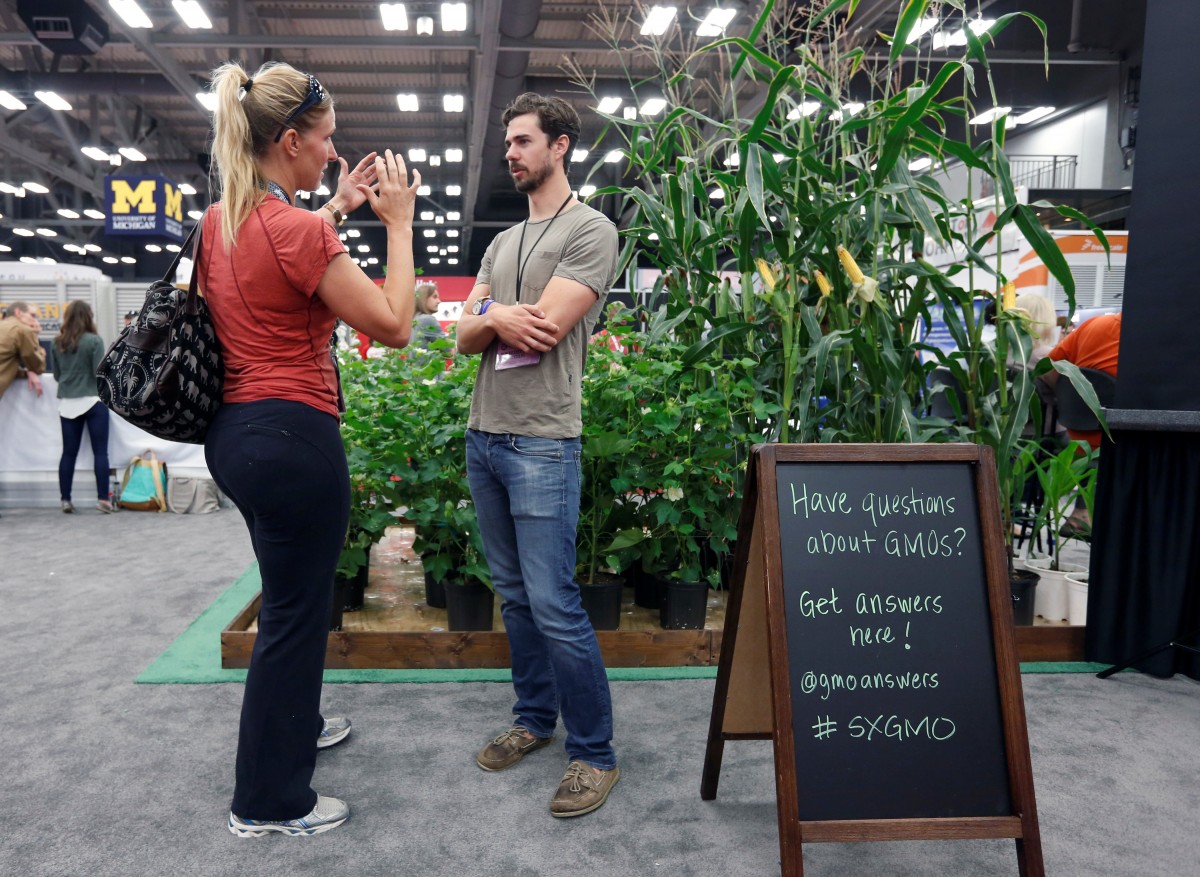Creating Solutions With Nature's Genetic Toolbox
This post was originally posted on Forbes on November 24, 2015.
Post written by Kate Hall. Kate Hall is managing director of the Council for Biotechnology Information and GMO Answers spokesperson.

Earlier this year when GMO Answers went to SXSW, another attendee and I bonded over a shared, favorite quote by the author, William Gibson: “The future is here – it’s just not evenly distributed yet.” Nowhere is this truer than in the field of biotechnology, with which we aim to understand and harness nature’s tremendous capacity to create, protect, change, replicate and regenerate to develop biologically-based solutions that address our most pressing challenges.
What exactly is biotechnology?
First, a more formal definition – what exactly is biotechnology? Article Two of the Convention on Biological Diversity defines biotechnology as “any technological application that uses biological systems, living organisms, or derivatives thereof, to make or modify products or processes for specific use.” Applying this definition and the most rudimentary view of “technology”, it’s clear that biotechnology is not at all new. In fact, humans been making use of nature’s genetic toolbox for thousands of years through processes like plant and animal selection and domestication, hybridization and fermentation.
When it comes to biotechnology, most people may be familiar with GMOs, but those GMOs (crops developed by taking a desired trait from one organism and moving it to another) are only one part of the much broader field of biotechnology, one that continues to expand as our knowledge and technological capabilities develop. Modern biotechnology techniques continue the tradition of learning and borrowing principles from nature, and is applied in fields as wide ranging as health care, energy, cosmetics, waste treatment, and textiles, as well as agriculture. Additionally, scientists will often employ more than one technique in research and product development. So, it’s important to note that while all GMOs are products of biotechnology, not all products of biotechnology are GMOs as we define them here.
A glimpse into the future of biotechnology
I caught a glimpse of the future that’s coming at a recent biotech conference, SynBioBeta, in San Francisco, where several of the innovations from large and small companies and new start-ups are focusing on challenges in agriculture. As is often cited, by 2050 not only will farmers need to produce enough to feed, clothe and provide fuel for nearly 10 billion people, but they will also have to do so while minimizing inputs like water, land and fertilizers and facing new disease, pest and yield pressures brought on by changing climate patterns. New technologies and applications that exploit nature’s capacity will be required for intensified, sustainable production.
One example is Asilomar Bio, which with support from the Bill and Melinda Gates Foundation, is working to develop a bio-based crop protection product that tackles a prevalent weed in Sub-Saharan Africa, Striga. Striga, also known as witchweed, infects staple crops, like maize and rice, stealing moisture and nutrients away from the plant, in addition to producing a phytotoxin that further damages the crop. According to the African Agricultural Technology Foundation, an infestation of Striga can result in crop losses of 30 percent to 100 percent, affecting the lives of up to 100 million people. Asilomar Bio is currently conducting field trials in Uganda and Kenya, showing positive results in multiple crops.
How biotechnology can offer sustainable solutions
Water is a major input limiting yields of agronomic crops. Worse yet, salinity of irrigated water is increasing. UC Davis reports that California’s economy will lose nearly $2 billion and over 10,000 jobs this year due to the drought that’s severely impacted agricultural production in the state. Endura Bio, a group of scientists, engineers and entrepreneurs, seeks to solve these overlapping problems by taking a systems approach to ‘replump’ crops to make use of both less water and water of lower quality (more saline).
And, while we need to protect yields so that more people will have enough food, more people will also require, well, more stuff. One company tackling this challenge is Ecovative, which grows, yes grows, bio-based materials. Ecovative uses mycelium, “mushroom roots”, and agricultural waste to grow biodegradable, compostable Mushroom® packaging that replaces petroleum-based foam packaging, and Myco board, a wood alternative that can be used in place of plywood and particle board. Bio-based products like these can help alleviate the environmental impact associated with manufacturing wood and petroleum-based products. (It’s also worth noting that Ecovative grew the stage set for SynBioBeta this year.)
Nature is our best engineer. Innovators continue to learn from her and utilize the latest advances in biotechnology to address these challenges. The future has been here all along, and we are just at the exciting forefront of understanding what is possible by utilizing nature’s vast toolbox.